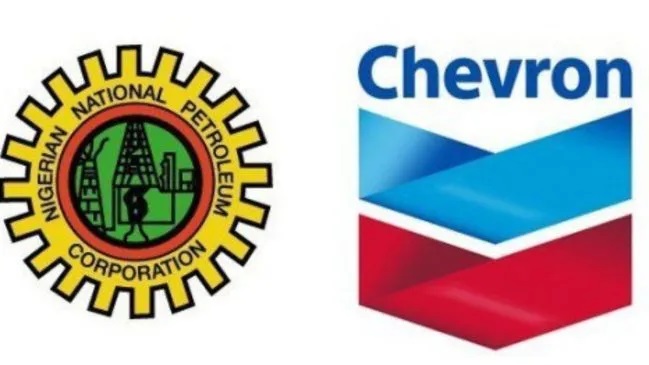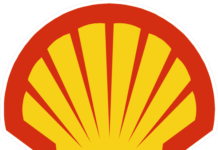.Differentiate between dry crude number for the purposes of OPEC and total liquid produced for the country.
CHIGOZIE AMADI
NNPC/Chevron joint venture has set in motion all the necessary measures that will enable it to achieve a cumulative barrel equivalent of hydrocarbon production of up to 450,000 per day in about two years.
Bala Wunti, managing director of the NNPC Upstream Investment Management Services (NUIM), disclosed this in an interview he had with Channels Television monitored by our correspondent
This follows the recent agreement that took place between NNPC and Chevron Nigeria Limited as a result of the conversion of some of their Oil Mining Licenses (OML) or Oil Prospecting Licenses (OPL) to Petroleum Mining Leases and Petroleum Prospecting Licenses.
The NUIM boss spoke on a number of issues affecting crude oil production, the recent agreement with Chevron Nigeria and NNPC Limited, and the role of NNPC Upstream Management Services, the investment arm of NNPC, in the management of the nation’s hydrocarbon.
“In about two years from now, the joint venture should be in a position to have a cumulative barrel equivalent of hydrocarbon production of up to 450,000 barrels from this engagement. Again, underline the word barrel equivalent, which means a combination of three streams of hydrocarbon, which are gas, crude oil, and condensate,” he said.
Explaining further, he said the NNPCL/Chevron Joint Venture target for this program is about 165,000 barrels of crude oil per day. This is far away from the 140,000 barrels that was the production level. It is currently doing about 152,000 barrels per day; but the joint venture is pushing up to make sure that by the end of the year, it is in the neighborhood of 163,000-165,000 barrels per day by the end of the year.”
According to him, in the short term, the conversion will lead the joint venture to 165,000 barrels a day, and in the medium term, a cumulative barrel equivalent oil production of 450,000 barrels per day.
He said with this conversion more investment can happen because of the level of confidence it will engender in investors, including chevron.
With these licenses, he said, the joint venture can go for alternative funding and all other things that are needed to be done to have more access to funding that will improve their production.
The NUIM boss stated that they are also looking beyond this, as it is looking at its gas assets with the hope of improving its gas footprint.
The joint venture has a very decent balance between gas and oil, ‘so whether you look at it from oil to gas ratio or from gas to oil ratio, they are uniquely positioned to structure their investment outlook at what either gas or oil, irrespective that we are going out with the same outcome.’
“In about two years from now, the joint venture should be in a position to have a cumulative barrel equivalent of hydrocarbon production of up to 450,000 barrels from this engagement.
Again, underline the word barrel equivalent, which means is a combination of three streams of hydrocarbon, which means gas, crude oil, and condensate.”
On the role of NUIM in the oil and gas industry, he said, its key role is basically to manage NNPCL investment in the joint venture between NNPCL and other partners, even though it is not an operating partner.
“Our second key role is also to manage the Production Sharing Contracts (PSC) of the government under NNPC stewardship. These two combined roles conferred on NNPCL the onerous task of making sure that it is optimizing the country’s hydrocarbon resources, which are oil, gas, and condensate production at all times.
Over the last couple of years, he said the sector has been challenged significantly by security and a lack of investment arising from uncertainties related to the fiscal systems, but he is glad to say that the challenges are being addressed.
“I am happy to say that we have mitigated significantly the security vulnerability around the company’s operating corridor; we also have successfully, to some extent, had better clarity around the Petroleum Industry Act, PIA, and how it has provided a more competitive fiscal environment for the company to do its business, optimize value creation, and deliver to its shareholders.
He said, most importantly, NNPCL, as of today, is meeting all its cash call obligations. “I am glad to say that no partner is being owed any cash call; the company is up to date in its obligations. As a matter of fact, we are very proud that for the first time in a very long time, cash calls have not been part of what has been keeping the GCEO awake. That issue has been crushed for good, and we are looking forward to having a significant improvement in crude oil production level.”
As regards what keeps him awake, he said three things are responsible for keeping him awake. He said the number one thing that keeps him awake is production; no. 2 is production, and no. 3 is production. This is because, he stated, the production of hydrocarbons in this country depends on the strength of its energy security and the strength of her financial security. “Whether you look at it from a revenue perspective or from a foreign exchange perspective, He said the volume of hydrocarbon produced plays a significant role in the stability of the country’s financial sector; therefore, any suboptimal performance in the hydrocarbon production will have direct consequences for the financial system of the country. This is what keeps me awake. Knowing that 75 percent of all producing and nonproducing assets of this country is being managed by NUIM, meaning that our actions have a 75 percent impact on the overall performance of this industry.
Making clarification on the misgiving that people are having about the production level and the level of impact it has on the financial sector, he stated that data on those issues are very clear, saying that there is no doubt Nigeria is a monolithic economy, and this means that the country depends on the revenue from the oil and gas industry.
He stated that at the last check, 67–70 percent of the country’s revenues come from oil and gas sector-related activities, and in terms of foreign exchange, it is even in excess of 80 percent.
The combination of foreign exchange and revenue, he stated, determines the financial stability of every nation, but most importantly, the role of NNPCL as a catalyst for national development and growth underpins the major requirement for securing the energy security landscape; that would not have been possible without the role NNPCL is playing.
According to him, when you talk about the clarity NNPCL is bringing, he said many times there seems to be a misconception of what constitutes the production of oil in Nigeria. He explained that there are two sets of numbers that are often presented for the purposes of OPEC and OPEC compliance. One, he said, deals with dry crude alone and only dry crude.
This is the one to which Nigeria owes its responsibility to meet its quota; however, for the purpose of Nigeria’s revenue computation, either in terms of taxes, royalties, or even the profit or equity barrel that Nigeria needs to take, ‘we look at the total liquid as the total production.’ This means it is the dry crude for which Nigeria is obligated to comply with its quota under OPEC, and then condensate, which is also liquid.
He said in many instances, the crude and the condensate co-mingled together, so the total volume, which is normally reported, is Nigeria’s total liquid production. He said what Nigerians see most of the of the time is the regulator’s report of dry crude numbers for the purpose of OPEC, or what is called the OPEC report of Nigeria’s barrels. So if one needs to report Nigeria’s daily production, we need to take the dry crude number, which is around 1.35 million barrels per day, and add it to the condensate produced, which is around 300,000 barrels. Add the two, and the figure will come to around 1.6 and 1.7 barrels per day. It must be emphasized that the figure that is normally taken to OPEC is dry crude alone. But, anytime NNPC reports about oil production, it is about total liquid, and when NUPRC reports crude production, it is talking about total liquid, and this number is different from what is submitted to OPEC.
On PIA and the recent agreement between NNPCL and Chevron, he said, the recent agreement between NNPCL and Chevron Nigeria Limited was about the NNPC joint venture complying with the law. He said the PIA in Section 92 provides for any license holder to convert into the new fiscal system. What this means is that companies are free to convert their oil mining licenses (OML) or oil prospecting licenses (OPL) to petroleum mining leases and petroleum prospecting licenses.
Under this circumstance, what the law has done is to enable you to take advantage of the new fiscal system that is more competitive. As you know, the PIA provides for lower royalties and taxes, and overall, it is more competitive than the former fiscal system.
He said what NNPCL did with Chevron was to take advantage of the new law.
For the joint venture to enjoin that, he said they did everything they needed to do to comply with the law, stating that collaboration matters. The strong collaboration between NUIM as a non-operating partner and Chevron as an operating partner requires a significant level of alignment. The alignment, he said, made the joint venture successful in meeting all the requirements for them to carry out the necessary conversion.
With this development, the joint venture is now positioned to be more profitable and to go ahead to do its business with confidence in order to generate more value for its share holders. “Most importantly, it creates properly kept licenses that are up to date, which have also gone through a regulatory compliance check list; it is therefore an unencumbered asset. With this now, business can happen without any restriction. The incentive to invest will lead to an increase in the production level of the joint venture.
He said in anticipation of the conversion, the joint venture leveraged the strong collaboration that already existed and took some measures to increase its production level.
The NNPCL/Chevron Joint Venture target for this program is about 165,000 barrels per day, his stated.
This he explained is far away from the 140,000 barrels it used to do. Its is currently doing about 152,000 barrels per day; we are pushing up to make sure that by the end of the year we are in the neighborhood of 163-165,000 barrels by the end of the year.”
He explained that in the short term, the conversion will lead the joint venture to 165,000 barrels a day and, in the medium term, a cumulative barrel equivalent oil production of 450,000 barrels per day.
He said with the conversion more investment can happen because of the level of confidence investors such as chevron will have. With these licenses the joint venture can now go for alternative funding and all other things that needed to be done to have more access to funding that will improve their production.
The NUIM boss stated that the joint venture is also looking beyond this, as it is looking at its gas assets with the hope of improving its gas foot print.
The joint venture according to him, has a very decent balance between gas and oil, so whether you look at it from an oil-to-gas ratio or from a gas-to-oil ratio, they are uniquely positioned to structure their investment outlook at either gas or oil, irrespective of whether we are going out with the same outcome.
Mr.Wunti said in two years time the joint venture should be in a position to have a cumulative barrel equivalent of hydrocarbon production of up to 450,000 barrels from this engagement.
Again, underline the word barrel equivalent, which is a combination of three streams of hydrocarbon, gas, crude oil, and condensate. This is basically what this engagement can lead them to.

























